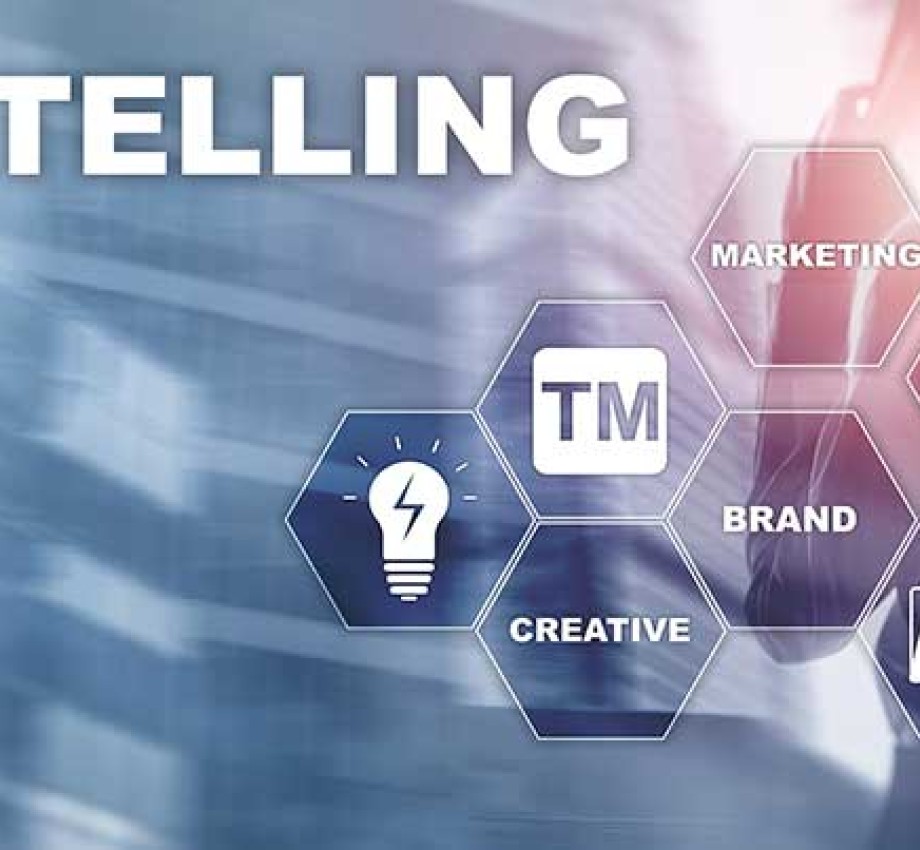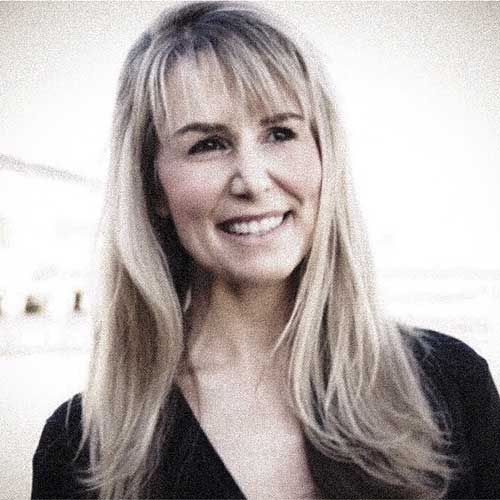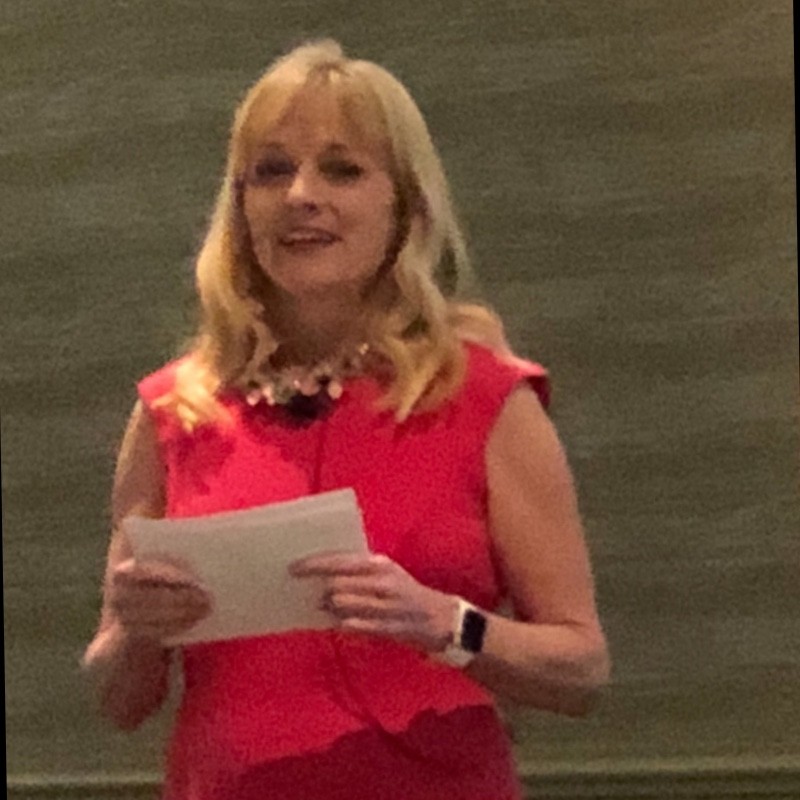Event Recap: New Marketing Challenges for Digital Innovators

Marketing leaders face an extremely diverse range of media, technologies and communications to develop strategies and support businesses in lead-gen activities and sound ethical positioning.
How can marketers combine swift and Agile trial-and-error strategies with rational, data-driven approaches to be opportunistic and strategic?
This question—and many more—were answered in this recent online panel event in partnership with the Fisher Center for Business Analytics at the Haas School of Business, the Alliance for Inclusive Artificial Intelligence, the Institute for Business Innovation and the Marketing Institute Ireland.
Moderator Gauthier Vasseur—Executive Director at the Fisher Center for Business Analytics, UC Berkeley—and our panelists discussed the approaches that marketers can leverage, and methods and techniques to assess their effectiveness.
About Our Speakers

Stephanie Buscemi, Chief Marketing Officer at Confluent
Stephanie is an accomplished business leader with a 20-year track record of success in B2B solutions marketing, business operations, field marketing and brand positioning. As Confluent’s CMO, Stephanie is responsible for leading and scaling the organization's global marketing organization as the company pioneers a fundamentally new category of data infrastructure focused on data in motion. Before Confluent, Stephanie was CMO of Salesforce, where she led a global team of 1,700 marketers working at the intersection of product vision, a dynamic market and a world-class sales organization.

Michaela Dempsey, Senior Director of Demand Generation Global Integrated Marketing Strategy at Workday
Michaela brings more than 15 years of enterprise experience to Workday Strategic Sourcing and is responsible for driving global marketing demand. Prior to Workday, Michaela led marketing and demand for now-public brands including Anaplan (PLAN) and Bill.com (BILL). She is also an Executive Director at the Global Council for Advancement of Women in Procurement. Michaela will soon be taking on a new role as CMO at a Series C startup that was incubated at Harvard.

Ellie Victor, CEO and Co-Founder of ZOOM Marketing
ZOOM Marketing is Silicon Valley’s first and longest-lasting strategic positioning agency. Since 1997, ZOOM has created category leaders and developed breakthrough stories for leaders, unicorns and startups such as Snowflake, Databricks, ThoughtSpot, Adobe, Oracle and Dell. With co-founder Nick Copping, Ellie developed the first data-driven approach to strategic positioning that blends creative thinking with customer and prospect testing.
What hasn't changed and will never change in marketing?
Ellie: Storytelling. Marketing is storytelling. Stories should be unmistakably linked to your core differentiator. That's the magic about marketing: Figuring out a story that loves to be told and is linked to your core differentiator. Your sales people use the story that you come up with. And when they use the story, the customers are nodding in the right direction. Your employees and your leadership team say the story. Your customers engage with the story. They share the story. Your competitors are forced to respond to your story. You, the CMO or the marketing leader, love the story and love telling the story. It connects to who you are.
Stephanie: I couldn't agree more on the storytelling aspect—it's repeatable, it's memorable. What hasn't changed is the idea that you have to put the customer at the center. Everyone is always making advances to better understand their customers and prospects. However, what has changed radically is what is at our disposal to understand those customers. There are so many sophisticated tools at our disposal. I think that's what most of us are trying to work through. Are we any smarter about our customers? Are we engaging with them in a more personalized way?
Michaela: The foundational importance of customer collaboration, at every stage, will never change. Understanding their needs, building deeper brand relationships, delivering better experiences and innovation. Although technology gives us advances that we need, it's those interpersonal relationships that help build a stronger product, a stronger solution. The data gets you to the question, but the people get you to the answer.
That's the magic about marketing: Figuring out a story that loves to be told and is linked to your core differentiator.
—Ellie Victor
Are there any new types of levers that you think about?
Michaela: Using social tools. There have been times where I am looking for pricing challenges or how to present, using tools like LinkedIn to ask complete strangers who are specialists in those areas to give you feedback on what they might do. It's collaborating with the customer and asking for their feedback.
Ellie: What we've seen is that good content is king. I have four ideas: something old, something new, something borrowed and something viral. [Laughs] Something old is billboards. One of our clients, Snowflake—which had the largest IPO in software history—created billboards that are up Highway 101 and you can't miss them. They say, "Mi Data, Su Data, Tear Down This Wall," meaning the data wall and also bring home Snowflake's mission, which is to enable every company to be data-driven. It's great content.
My second is a new lever: community. One client, ThoughtSpot, is in the analytics business and their customer is the chief data officer. They created this whole community for the data chief and one of the centerpieces of it is the podcast where they interview thought leaders in data science. They have a private Slack community, a LinkedIn community. Putting their customer at the center and providing support to them.
Something borrowed is from one of our clients, FloQast, which makes accounting software. Their key differentiator is that they were created by accountants for accountants. They had an idea to borrow from Hollywood and create a sitcom, PBC, on their YouTube channel. PBC is an inside joke for accountants and it means, "prepared by client." They already have 5 million subscribers to their channel.
Last is the viral example. Another one of our clients is SOCi, and they make a marketing platform for multi-location brands, like franchises. One of their customers is Ace Hardware, which is known as "the helpful place." A customer went into Ace to get materials to change their tire and the cashier actually went out and changed their tire. And that just blew that customer away. They took a picture of the cashier changing the tire and posted it on social, tagging Ace Hardware. And everyone started commenting and sharing, and that went viral. So user-generated content is something new. It's scary because you can't control it, as a marketer. But you want to set the wheels in motion to create that type of user-generated content. People are looking at reviews before they make decisions. And they trust user comments more than the brands.
Is there a new type or classic type of metric you stick to?
Michaela: If you're a public company versus a startup, it's your program dollars to pipeline, the content engagement, your qualified lead flow. The ultimate goal of any business is to grow, add customers and keep customers. How are you driving the business forward?
Stephanie: It's super important that marketing can show a direct connection to growth: customer growth, revenue growth, customer retention, landing new customers, and then cross-selling and up-selling. I've always been a big proponent of analytics. Early in my career, I learned the power and the value of using analytics to help get more investment and marketing because if I could present back the ROI on the marketing investment, I kind of took the emotion out of the conversation.
I don't think there's a shortcut anymore on how you're going to reach folks and do it in a trusted way to be able to have a long-term relationship unless you build out a first-party data strategy.
—Stephanie Buscemi
Beyond the value proposition that marketing pushes forward, what about the sustainability ethics and political stance that companies need to take? How should marketing be involved?
Stephanie: Coming from Salesforce, I would call it values-based marketing. I think companies have to stand for more than their products and services, particularly as you look at Gen X and Millennials. They're going to buy from companies that they believe have shared values with them. How do you go about communicating that?
At Salesforce, I'll give you a very specific example. In the U.S., there have been lots of school shootings. When the shooting at Sandy Hook happened, we asked, “Do we allow any of our customers to sell firearms because we have a commerce product? And how would we feel if we could track that ammunition was bought and transacted through a Salesforce commerce platform? Would we be okay with that?”
And we agreed we would not be okay with that. We had 30 customers that we went to, and said, “When your renewal comes up, we will not be renewing with you as long as you're selling arms because anyone can access them. And we don't want to know that anything was transacted through the Salesforce platform.”
You have to understand the core values of the company. They can't be a plaque on the wall. You have to use those as the compass to anchor back onto and be authentic and super-transparent with your customers about it.
Michaela: Workday is a very mission- and values-driven company. Their number one value is employees: If the employees are happy, then customers will be happy. Customers are more likely to do business with a brand that is perceived to be committed to diversity, inclusion and the environment. One of the key things that you can do, as a marketer, is award those contracts and score those suppliers on what they're doing, looking deeper into the supply chain. Have a supplier scorecard.
Ellie: If you look at what's going on in Ukraine, it's unprecedented how brands are getting involved with helping the Ukrainian people, putting their own sanctions on Russia. I think we'll look back at this point in history and be amazed at how brands are playing a role here. We can't have this conversation without talking about Patagonia. They are one of the leaders in mission-driven business. If you're shopping on their site, you can click on a jacket and see the entire supply chain, the transparency of what it costs the environment and the laborers to bring that jacket to you. They talk about using only organic cotton and recycled down. Now you see other retailers are imitating that.
Audience Question: We are getting less and less data about clients due to privacy rules. Are there other ways to get this information?
Stephanie: I don't think there's a shortcut anymore on how you're going to reach folks and do it in a trusted way to be able to have a long-term relationship unless you build out a first-party data strategy. For B2B, it’s about having that Account Engagement Score and that contact data score, investing in building out your profile and your knowledge of your first-party data of your customer and instrumenting it in a way that you have a consolidated view. Email, TikTok, SMS text—we have a million channels and there will always be a new channel introduced. But as much as email gets a bad rap, email in B2B is still a top performer. Have a preference center so the customer or prospect can choose the types of communications they want from you.
The more you can make your customers part of your life, you will have bounty.
—Michaela Dempsey
Audience Question: I don’t work for a billion-dollar company. Do I have a chance to do impactful marketing? How do you do that?
Michaela: Every company has a chance to do social impact and engagement. We need to stay curious and examine the different channels, and then bring out those important topics that align to your company's core values and your customers' core values.
Ellie: My message to everyone is to love this creative field. What is your story? How can I connect it to my customers in an authentic way? And leverage the channels that matter to them.
One secret to be successful?
Michaela: Customers. The more you can make your customers part of your life, you will have bounty. Making mistakes is a great way to learn—just go for it and take a chance.
Ellie: Purpose. What is your own purpose? How do you envision your purpose in life? And how does it intersect with what you do?
Stephanie: Speed. We're living in a very dynamic situation and marketing is all about constantly reinventing. And experiment, experiment, experiment.